|
This year marks the third full year of the OHBM blog. In 2018 we’ve published over 40 blogposts, covering topics as broad as diversity in brain mapping, neuroimaging in Iran, art and science and of course our interviews with the Annual meeting keynote speakers. We’ve seen changes in our editorial team, with new faces Claude Bajada and Ilona Lipp bringing fresh energy to our blogposts, but also saying farewell to two of our original blogteam members, Panthea Heydari and Thomas Yeo. We are proud to see Thomas becoming one of the keynote speakers at OHBM2019 in Rome, and Nikola Stikov, the original blogteam lead editor, taking over for Jeanette Mumford as Chair of the OHBM Communication Committee. Here, we share our favorite posts of the year. 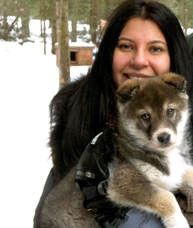 Aman Badhwar The holidays are fast approaching, and I would like to celebrate it by shining a light on the many nuggets of wisdom I have gained via my participation, both as a writer and an editor, on the blog team. I have had the opportunity to interact with many brilliant brain mappers, and have had many memorable conversations and exchanges. So here it goes: Daniel Margulies taught me to gesture to my head to illustrate that I study the brain. Trust me, it is so much more effective and easier to understand than my usual repertoire of explanations about what I do. But what he really hooked me with was the following: “Although there is a substantial focus in brain mapping of the differences and discrete boundaries between areas and large-scale systems, one challenge is to also consider how these distinctions are integrated into a functional whole”. Bruce Miller provided some key advice on things to concentrate on when the “functional whole” that Daniel mentioned is falling apart in the face of neurodegeneration. Bruce pointed out how important it is to concentrate on “not only what are the weaknesses, but what are the strengths, and has anything new emerged that is actually a new strength… What is preserved is telling us something about where in the brain the bad molecules are not accumulating. But it also allows us to think about the patients, about things that are important to them”. From the career development blog by the Student and Postdoc SIG, I was relieved to learn that every career path is different, and that there is still hope for me to start my own institute (and it just might be modeled after a treehouse, taking inspiration from Daniel Margulies here). Finally the Open Science SIG blog post reinforced for me that we are all part of the the scientific community, …..the sappy, corny and mushy reason we all stick around! Happy holidays everyone!!! 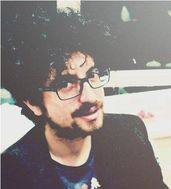 Claude Bajada Being new to the blog team, I feel as though this little fish is now swimming in the big pond, gill to gill with some of the biggest fish in human neuroimaging research. My first interview was with Ed Bullmore, learning about his diverse experience in the clinical, academic, and industry worlds. Entering neuroscience from a medical background myself, I was particularly interested in his advice to medical students who may be interested in the technical side of research but feel they “come from the wrong background”. During the 2018 OHBM meeting I met and interviewed the instructor of a MOOC I had followed during my PhD! Martin Lindquist was the 2018 OHBM educational award winner and we had a great discussion about the challenges students and researchers face in neuroimaging. In his words, the best advice may be to “be curious, look outside the box, be willing to do crazy things and fail, and have fun!”. Finally, I worked with this year’s local organising committee in preparing a short blog post about the 2019 25th anniversary OHBM meeting. I’m looking forward to seeing everyone in Rome! 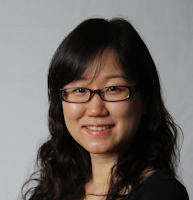 Jean Chen This has been my 3rd year on the OHBM blog team, and I am thoroughly enjoying the opportunities for shaping communications within our research community. This year, besides my OHBM Keynote interview with Gustave Deco, I mainly focused my efforts towards transcending geopolitical barriers of brain-mapping research, with the 2-part series on scientists and trainees from Iran. This initiative, though challenging, was very rewarding. Going forward, I hope to contribute more material to help guide the careers and lives of junior researchers. 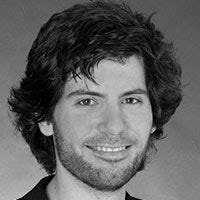 David Mehler Having worked in the media team before, I joined the blog team this year to broaden my science communication horizon. 2018 kicked off for me with an article about Open Science (OS) challenges; an idea that emerged after OHBM 2017 in Vancouver where so many of you had shown interest in OS. “Sharing is caring, but is privacy theft?”. It was also our first interview series on the PLOS Neuro blog and introduced a new format: several experts get to answer the same question. Together with media team captain Kevin Weiner we set out to find from Russell Poldrack, Jeanette Mumford, and 4 other OS pioneers! where they see the main challenges and solutions that will make our field more open and reproducible. The format worked well, the final post was rewarding, and I felt boosted for more Q&A. As a physician-scientist I am interested in the added value of neuroimaging for patients, and the difference it could make for neurology and psychiatry. And so my other favourite blogging experience in 2018 dealt with progress and challenges for imaging in depression. I hope that you will find the views of our translational brain mapping experts in “Closing the loop for brain imaging in depression: What have we learned and where are we heading?” as intriguing. Blogging in 2018 was great fun, and I am already so curious what 2019 will bring!! 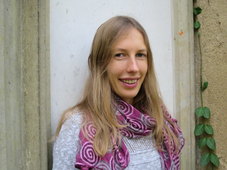 Ilona Lipp I only joined the blog team a few months ago and kicked off with quite an elaborate post, the “OHBM OnDemand How-to: resting state fMRI analysis” guide. It’s been really fun being able to write for a scientific audience in a less structured way than I do with papers, and I’m also very excited about my next posts (spoiler alert: there may be one coming out just after new year). 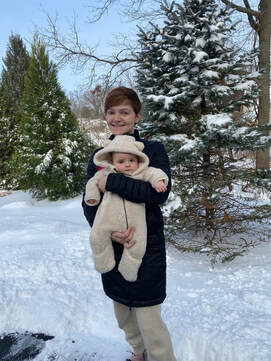 Ekaterina Dobryakova Hard to believe that 2018 is behind us. This year I had diverse writing opportunities that I greatly enjoyed. Through my post for PLOS Neuro blog, I interacted with and interviewed many leading minds in the field of traumatic brain injury research and neuroimaging. While acknowledging the complexities of scanning a clinical population, in particular the multi-disciplinary skills needed, all of the interviewees were optimistic about the potential insight into disease offered by developing neuroimaging methods. These posts were great for networking and connecting to other scientists in the field. It was also gratifying to receive emails from researchers who are new to the field or topic, or even lay persons who want to know more about brain injury due to personal experience. Such communications are always very inspirational. I also had a change of pace, writing a blogpost on the art exhibit by Shubigi Rao. Interviewing this artist revealed the similarities between art and science in aspects such as inspiration, patterns of work on a project, and exchange of ideas. Now, I am looking forward to more exciting interactions as we enter 2019. 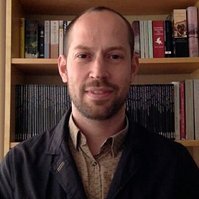 Nils Muhlert 2018 was our busiest year so far as Blogteam editor. There were a number of standout points for me (alongside the sweet egg buns in Singapore). We heard Leah Somerville discussing the potential effects of social media on teenage brains, and Aina Puce highlighting the challenges of quality control in multi-modal imaging projects. I really enjoyed hearing Mark Humphries’ views on how findings from cellular neuroscience currently constrain systems neuroscience theories - or whether that’s even happening at all! Finally, our first double interview between Heidi Johansen-Berg and Charlie Stagg extended these discussions on ways in which preclinical and clinical scanning can be fruitfully combined but also considered major advances in measuring neurotransmitters like GABA using MR spectroscopy - a method that has so far received scant coverage in our blogposts.  Jeanette Mumford (ending note as Chair of Comcom) I’m so glad I decided to join the Communications Committee three years ago and am honored that I was able to serve as chair over the last year. I’m amazed by how far we’ve come and how hard the members of the committee work as well as Stephanie McGuire, our fearless Communications Manager. For the first time since 2004, I wasn’t able to attend the conference in Singapore, but thanks to the blog posts, tweets and OnDemand materials, I don’t feel like I completely missed out. I’m a big fan of the posts related to the OHBM Open Science SIG and the OHBM Student and Postdoc SIG, because they’re such a great addition to OHBM and I wish they existed when I was a graduate student and postdoc. I also really like the Keynote series, since the interviews offer a new dimension about the speaker beyond what we’d get from their talk, reading their papers or their CV. I’ve even gotten to help out with a few of the posts this year, including the “OnDemand How-To: Resting State fMRI” piece, which featured some great videos in the OHBM OnDemand portal. Overall, it was a great year and I can’t wait to see what we do in 2019. From all of us at OHBM Communications Committee, we wish you a happy and productive 2019!
0 Comments
Your comment will be posted after it is approved.
Leave a Reply. |
BLOG HOME
Archives
January 2024
|
 RSS Feed
RSS Feed